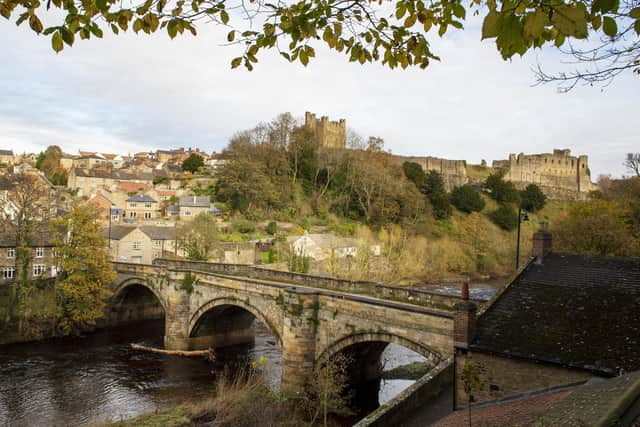Romantic ruins and tragic tales of Richmond Castle
It has dominated the skyline over the small North Yorkshire market town of Richmond for more than 900 years and during that time has been a fertile source of artistic inspiration – most notably for the renowned J.M.W. Turner. In the late 18th Century, he created a watercolour painting of the castle which is now housed at the Tate Britain in London.
A spokesperson for English Heritage, which has looked after the castle since 1984, said: “The castle was originally built so the ruling Normans could quell the resistant, troublesome northerners, and with its dramatic hilltop position the centuries have done nothing to dim its grandeur.
Advertisement
Hide AdAdvertisement
Hide Ad“The buildings, all but one of them dating back to medieval times, cluster around a large central grassed area with magnificent views over the river a hundred feet below.”


There have also been plenty of turbulent times involving the castle down the centuries but perhaps most infamously during the First World War when the castle was occupied by the northern Non-Combatant Corps, made up of men who wanted exemption from military service.
English Heritage spokesperson explain: “Some men who had been ordered to join the Corps refused to take part in any work touching the war effort, because it went against their fundamental beliefs. In 1916 a number of them were detained in cells at Richmond Castle in a 19th-century building, previously the castle’s reserve armoury, beside the castle gate. The walls of these tiny rooms are still covered with graffiti made by the objectors. Some of these conscientious objectors, who became known as the Richmond Sixteen, were sent to France in May 1916, where they were put on trial for refusing to obey orders, and faced a potential death sentence. Their transportation to France, trial and sentencing have become notorious in the history of conscientious objection.”
Technical information: Nikon D4 camera with a 24mm lens, exposure of 1/400th second at f6.3, ISO400.
Advertisement
Hide AdAdvertisement
Hide AdSupport The Yorkshire Post and become a subscriber today. Your subscription will help us to continue to bring quality news to the people of Yorkshire. In return, you’ll see fewer ads on site, get free access to our app and receive exclusive members-only offers. Click here to subscribe.
Comment Guidelines
National World encourages reader discussion on our stories. User feedback, insights and back-and-forth exchanges add a rich layer of context to reporting. Please review our Community Guidelines before commenting.